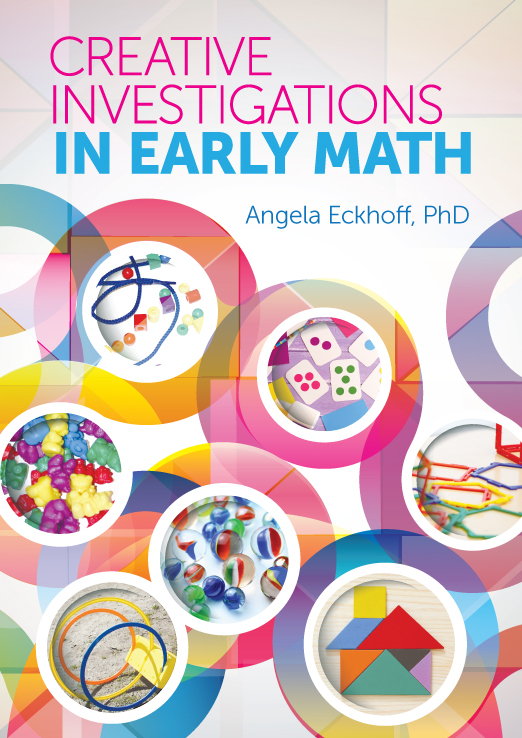- Home
- Activities
- Preschool Geometry: Shape Identification Activity
Preschool Geometry: Shape Identification Activity

Teaching young children mathematics in a linear, fact-based fashion isn’t ideal. Instead, teachers should use and promote hands-on learning, which allows children to remain engaged both physically and mentally for optimal learning experiences.
Activities that promote this type of learning can be found in Creative Investigations in Early Math by Angela Eckhoff. In this book, you can find preschool math activities that teach numbers and number sense, computation, geometry and spatial sense, measurement, data collection and statistics, and patterns and relationships
To teach children about early geometric concepts in a hands-on way, use this activity from Creative Investigations in Early Math.
Guessing Shapes
Encourage children to create shapes as they draw on paper and use the correct names of the shapes they create.
Topic: Recognizing and describing the attributes of a circle, triangle, rectangle, oval, hexagon, and square.
Objectives:
- Children will describe how shapes are similar and different.
- Children will recognize and name these two-dimensional shapes: circle, triangle, rectangle, oval, hexagon, and square.
Materials:
- Construction paper or cardstock circles, triangles, rectangles, ovals, hexagons, and squares in various sizes
- Bag to hold the shape cutouts
Overview:
This shape-guessing game can be introduced during a whole-group lesson and then played by children in small groups once they understand the goals of the game.
Activity Steps:
- Introduce any shapes you have not already discussed with the children. Make sure you have examples of all of the shapes displayed where the children can see them. Go over the names and attributes of all of the shapes. It is helpful to revisit this information as a group to prompt children’s memory without putting them on the spot to recall information individually.
- Explain to the children that you will pass around a bag filled with shapes, and one child will pull a shape out of the bag and keep it hidden from the group. The class will ask questions one at a time to try to guess the shape that the child is holding.
- Model a question or two to get the children started. You might ask some of the following questions: How many corners does the shape have? Is the shape round? Does the shape have four sides that are all the same? Does the shape have four sides that look different?
- The child that names the correct shape gets to choose a shape out of the bag next, and the questioning continues.
- Collect the correctly identified shapes so that the children will stay focused on each new shape drawn out of the bag.
Documentation:
Take anecdotal notes on the children’s abilities to recognize the different two-dimensional shapes and their abilities to describe the attributes of the shapes.
Extension Lessons:
- As the children gain experience with 2-D shapes, add 3-D shapes to the game to increase complexity and extend the learning.
- Encourage children to collaborate and make simple shapes with their bodies.